
Exponential monthly growth in demand should propel Bitcoin to $100,000 by the end of 2021, according to the CEO of SkyBridge Capital, Anthony Scaramucci.
from Cointelegraph.com News https://ift.tt/2WAgx5g

I am introducing cryptography. Cryptography is used to secure and protect data during communication. Encryption is a process which transforms the original information into an unrecognizable form. Decryption is a process of converting encoded/encrypted data in a form that is readable and understood by a human or a computer.

Exponential monthly growth in demand should propel Bitcoin to $100,000 by the end of 2021, according to the CEO of SkyBridge Capital, Anthony Scaramucci.
Apple is expected to launch the iPhone 13 series soon, and plenty of details about the new-gen phone have surfaced online in the form of rumours and leaks. The latest report from MacRumors suggests the upcoming iPhones will come with LEO (Low Earth Orbit) satellite connectivity for users to be able to make calls or send messages in emergency situations where they find themselves with no network coverage.
Popular analyst Ming-Chi Kuo, in a note to investors, has suggested Apple will include the technology in the 2021 iPhones. The new-gen phone is said to come with hardware and software for easy connectivity with LEO satellites. With this, users will be able to send a message or call someone even when no 4G or 5G network is available.
The iPhone 13 is expected to come with a customized Qualcomm X60 baseband chip for support with satellite communications. Apple is most likely to bring on board Globalstar for this as its LEO satellite communication service provider. That said, SpaceX's Starlink is a popular provider of the same service, too.
It is suggested that for Apple to provide this functionality to users, each network operator may collaborate with Globalstar. This would allow users to directly get in touch with Globalstar's satellite communication service via their network operator without having to pay any extra charges.
As for the new iPhone 13 line up, the company is expected to launch four models: the iPhone 13, 13 Mini, 13 Pro and 13 Pro Max. All devices are expected to come with improved cameras, bigger batteries, a smaller notch, improved Face ID, an A15 Bionic chip, iOS 15 and more. The Pro models are also expected to get a ProMotion 120Hz display and a few new camera features, among other things.
The iPhone 13 series is expected to launch next month.

FTX.US acquires LedgerX for an undisclosed amount to dive into Bitcoin and Ether futures trading.

Is BTC, crypto’s flagship, prepared to fend off Ethereum with its “incredible network value, rich community and pace of innovation?”
Some important details of Apple's upcoming launch, the Watch Series 7, have surfaced online ahead of its debut. According to Bloomberg reporter Mark Gurman’s Power On newsletter, the new line-up is said to feature a slightly bigger display and flatter edges. This design feature will be in line with Apple’s new design language. The watch will also feature a faster processor.
Each model of the series will receive a one-millimetre increase to measure in at 41 mm and 45 mm. Some leaked images of the upcoming Watch indicate similar 41 mm and 45 mm sizes. The newsletter also includes Gurman's statement mentioning Apple will include multiple new watch faces to cover most of the extra screen real estate. This will include a new version of the Infograph Modular watch face.
The only time Apple has changed the case design of the watch was when it rolled out the Series 4. Since then, the basic appearance has remained unchanged throughout the series, with some new additions and finishes being added over time. The design refresh on the new line-up for series 7 will stick to a three-year trend as has been the case with major Apple Watch hardware refreshes.
There will be no major health-focused upgrades this year, as per Gurman. The next year could be a different story, as the company may even include a body temperature sensor in the 2022 model.
For the uninitiated, Apple usually announces new watches in September. Assuming this, fans can expect a reveal of the series 7 soon. The watch is expected to be announced with the iPhone 13 series, but the schedule could change. Back in 2020, the Series 6 and SE watches made Apple’s September event hugely successful; consequently, the iPhone 12 unveiling was postponed to October.
Instagram has made it mandatory for users to add their birthday on the app. The company, via a blog post, announced it will now start showing a notification to people asking them to update their birthday on the app if they haven't already done that. This pop-up message – and the move to make birth dates mandatory – is meant to provide a safer platform for younger users of the app. With this, Instagram will be able to create a customised experience for users and introduce features and settings basis their age.
What this move will also do is make the recently-introduced safety features on the platform more effective. A recent update prevents adults from messaging users under the age of 18, and makes a teenager's account private by default; the inclusion of birth dates will mean these safety provisions will be effective.
This will also impact the types of ads a user sees. Users under the age of 18 won’t be subjected to ads, as Instagram won't let advertisers insert ads in their feeds.
The pop-up message will appear for those who haven't added their birthday details on the app yet. Instagram originally started asking users to add their birthdays in 2019.
Those who haven't added their birthday details yet will continue to see the message, and if they continue to ignore the warning, they won't be able to use the app until they finally provide the birthday. It will also show the warning on posts and hide posts themselves until the user’s birthday details are added.
It is also suggested that users can't get away with providing incorrect birth date details. The platform will make use of artificial intelligence to learn if the age provided is right. If not, it will provide a list of options for users to verify their age. The feature is understood to still be in the early stages and requires some work.

South Africa’s top banker has said that cryptocurrencies are more akin to assets than actual currencies.

Canaan has also granted Genesis Digital Assets an opportunity to buy up to 180,000 additional BTC mining machines.
After completing its final testing, the James Webb Space Telescope is being prepared for transportation to its launch site in Kourou, French Guiana. The launch is slated to take place on 31 October this year.
NASA stated that since there is no more large-scale testing that needs to be conducted, Webb’s cleanroom technicians will work towards ensuring its reaches its launch pad safely. This is a drastic shift from their previous focus — demonstrating Webb can survive the harsh conditions of launch and work in orbit.
The space observatory will travel through the Panama Canal to French Guiana which is on the northeastern coast of South America. It will then have a ‘dress rehearsal’ before it rolls out to the launch pad two days before launch. The telescope will be launched into space aboard the Ariana 5, one of the most reliable launch vehicles presently available.
The telescope is a collaboration between the National Aeronautics and Space Administration (NA
ESA states that Webb is a ‘Flagship’ mission which is a generational project. It was built on the legacy and the lessons that scientists learnt from its predecessors like Hubble.
As the Webb telescope is being transported, the machine’s Mission Operations Center (MOC) at the Space Telescope Science Institute (STScI) will continue testing its complex communication network. The telescope will undergo further prelaunch testing.
After a 26-minute ride aboard the launch vehicle, the Webb spacecraft will detach from it and automatically deploy its solar array. Webb will have an 'action-packed six months' commissioning period. According to Space.com, at 13.2 meters long and 4.2 m wide, the telescope is about the size of a large tractor-trailer truck. It is fitted with intricate sun shades that could cover a tennis court once unfolded. It will deploy its sun shields a few days after its launch with the instruments and telescope starting to cool down. The craft will take approximately one month to reach its destination.
https://ift.tt/3ku5Xo6
The telescope will observe the universe from the vantage point of Lagrangian Point 2 (L2), located some 1.5 million kilometres away from Earth. The L2 point is one of the five points around the Earth and Sun, where the gravitational forces of both celestial bodies are in balance. This will enable the spacecraft to maintain a stable position with respect to Earth.
Bill Ochs, Webb project manager for NASA Goddard, remarked that he couldn’t help but see “the reflections of the thousands of individuals who have dedicated so much of their lives to Webb, every time I look at that beautiful gold mirror.”
The competition for places in the sub-Rs 40,000 segment in India is a bit too stiff at present. Choosing just five handsets in this crowded segment proved to be near impossible. Hence, we have chosen not five, but eight smartphones for you this month. There’s a full spread on offer, starting with a couple of handsets with Snapdragon 888 SoC, ample RAM and storage, one with 108MP camera, and high refresh rate AMOLED screens is a given. So, let’s see which phones made the cut this month.
Best phones to buy under Rs 40,000 in India
Xiaomi’s Mi 11X Pro 5G flaunts a handful of features you’d expect from a genuine flagship device, starting with Qualcomm’s Snapdragon 888 SoC. You get 8 GB RAM and 128 GB storage to go with it. You also get a 108 MP camera at the back to capture some impressive shots in different modes and lighting. It is accompanied by an 8 MP ultra-wide shooter and a 5 MP macro camera, and there’s also a 20 MP front camera for selfies and video calls.
The display here is equally impressive. You get a 6.67-inch Super AMOLED Full HD+ display with a 120 Hz refresh rate, HDR10+ compliance and a theoretical brightness of 1,300 nits. The display and the phone’s glass back are protected by a layer of Corning Gorilla Glass 5. The bundled 33 W fast charger promises to charge the phone fully in under an hour. The Mi 11X Pro runs Android 11 with MIUI 12 on top.
Xiaomi Mi 11X Pro 5G price in India: Rs 39,999 for 8 GB RAM/ 128 GB storage
Again, both the OnePlus twins make it to our list. I call them twins because the OnePlus 8T and 9R are almost identical, barring a couple of minor differences. You get their 8 GB RAM and 128 GB storage variants in this budget, with the 8T selling for Rs 1,000 less. Both phones have 6.55-inch Full HD+ Fluid AMOLED displays with a 120 Hz refresh rate and HDR10+ compliance. There’s a 16 MP selfie camera located in a tiny punch-hole at the top. The metal frame and glass body protected by Corning Gorilla Glass 5 gives both phones an elegant look.
You get quad cameras at the back with a combination of a 48 MP primary camera with OIS, a 16 MP ultrawide shooter, 5 MP macro camera and a 2 MP mono camera. The cameras manage to capture crisp images in different lighting and modes. The main camera can be smartly used to capture some high-quality zoom shots, too. Both phones are 5G-compliant, and while the OnePlus 8T is powered by Qualcomm’s Snapdragon 865 chip, the 9R has a slightly faster Snapdragon 870 SoC. Their 4,500 mAh batteries keep the phones powered for over 30 hours of moderate use, and the bundled 65 W Warp charger juices them up in just about 40 minutes. Both phones run OxygenOS 11 based on Android 11 out of the box.
OnePlus 9R price in India: Rs 39,999 for 8 GB RAM/128 GB storage
OnePlus 8T price in India: Rs 38,999 for 8 GB RAM/128 GB storage
Probably the most stylish phone here, the Vivo X60 is just 7.4 mm thick. And there’s more to it than its good looks. Let’s start with the rear cameras that boast of Zeiss optics and click some excellent shots and videos. The 48 MP primary camera, 13 MP ultra-wide camera and 13 MP telephoto camera for 2X optical zoom do a commendable job across various modes. The 32 MP front camera is good enough to impress selfie enthusiasts.
Next, the vibrant 6.56-inch Full HD+, HDR10+ compliant AMOLED screen with its 120 Hz refresh rate is simply excellent. It is protected by a layer of Corning Gorilla Glass 6. Just like the OnePlus 9R, this phone is powered by a Qualcomm Snapdragon 870 SoC, and you get either 8 GB RAM and 128 GB internal storage or 12 GB RAM and 256 GB of storage in this budget, following a recent price drop. Despite its slim body, you get a 4,300 mAh battery that lasts for over a day of moderate use, and a 33 W fast charger is present in the bundle. The phone runs Android 11 with FunTouch 11 UI.
Vivo X60 price in India: Rs 34,990 for 8 GB RAM/128 GB storage; Rs 39,990 for 12 GB RAM/256 GB storage
Two phones from Vivo’s iQOO sub-brand retain their spots on this list. The iQOO 7 5G is also powered by a Qualcomm Snapdragon 870 chip, and you have two variants to choose from with either 8 GB or 12 GB RAM with 256 GB internal storage. Yes, there is an 8GB/128GB variant available, but don’t bother with it if you have a budget of Rs 35,000 to 40,000. Its 6.62-inch HDR10+ compliant Full HD+ AMOLED display has a 120 Hz refresh rate for smooth scrolling in compatible apps.
The 48 MP primary camera has OIS and is accompanied by a 13 MP ultra-wide camera and a 2 MP depth sensor. The 13 MP telephoto camera present in the iQOO 3 has been given a skip, but the addition of features here far outweighs that loss. Its attractive price tag makes the iQOO 7 5G a compelling choice in this budget. The phone runs Android 11 with FunTouch OS 11.
If you need more processing power and a few extra features, you can also get the 8 GB RAM and 128 GB storage variant of the iQOO 7 Legend in this budget. It has a more powerful Snapdragon 888 SoC and comes with a 13 MP telephoto camera for 2X optical zoom. However, you will need to shell out Rs 8,000 extra over the iQOO 7 with similar storage.
iQOO 7 5G price in India: Rs 33,990 for 8 GB RAM/256 GB storage; Rs 35,990 for 12 GB RAM/256 GB storage
iQOO 7 Legend 5G price in India: Rs 39,990 for 8 GB RAM/128 GB storage
Hello gamers! The Asus ROG Phone 3 is now available for less than Rs 40,000. This phone is powered by Qualcomm’s previous flagship Snapdragon 865+ and is accompanied by 8 GB of RAM and 128 GB of UFS 3.1 internal storage. The ROG Phone 3 has a 6.6-inch Full HD+ AMOLED screen with a 144 Hz refresh rate and a 270 Hz touch sampling rate. It also supports true 10-bit colour gamut with HDR10+ compliance and a rated maximum brightness of 650 nits. The phone runs Android 10 with ROG UI. The Android 11 update has just started rolling out.
The 5G-compliant ROG Phone 3 boasts of a large 6,000 mAh battery for long gaming sessions. The bundled 30 W fast charger with QuickCharge 4.0 support enables brisk refuelling. The phone also has a pair of stereo speakers with dedicated amplifiers along with a bunch of gaming features and optimisations. The camera department is more than capable with a 64 MP primary camera, 13 MP ultra-wide camera and a 5 MP macro camera, all of which capture some impressive shots and record videos in up to 8K resolution.
Asus ROG Phone 3 price in India: Rs 39,999 for 8 GB RAM/128 GB storage
The mid variant of the Apple iPhone SE (2020) with 128 GB storage is available in this budget, and for a couple of thousand rupees less this quarter. The 2020-edition Apple iPhone SE is more of an iPhone 8 successor with a much more powerful processor. It is powered by Apple's previous flagship A13 Bionic chip that you get with all iPhone 11 series phones. This phone is a good option for those who prefer the older iPhone design with more recent hardware.
It has a 4.7-inch Retina LCD display with 326 PPI pixel density that’s typical of most iPhones. You get the ever-reliable 12 MP camera with OIS at the back, and a 7 MP selfie camera. This IP67 rated dust- and water-resistant iPhone runs iOS 13, and is upgradeable to iOS 14. If you wish to try your hand at the iOS platform without breaking the bank, the Apple iPhone SE is a good option.
Apple iPhone SE (2020) price in India: Rs 34,999 for 128 GB storage

On-chain data is showing more and more similarities to mid- and late-2020 — the springboard period for the Ether and Bitcoin bull market.
SpaceX launched its Cargo Dragon for a resupply mission to the International Space Station on 29 August and it docked at the station the next day, 30 August. The spacecraft was launched on a two-stage Falcon 9 rocket from the National Aeronautics and Space Administration’s (NASA) Kennedy Space Centre, Florida.
The craft carried more than 2,170 kg (4,800 pounds) of crew supplies, spacecraft hardware and science experiments. This is SpaceX's 23rd Commercial Resupply Services (CRS) mission.
After the Falcon 9 launched, the first-stage booster executed a graceful landing at sea, on SpaceX's drone ship A Shortfall of Gravitas.
Andy Tran of SpaceX stated that the launch was “the 90th successful landing of an orbital class rocket and the very first for our newest drone ship, 'A Shortfall of Gravitas.'"
SpaceX now boasts of three Falcon 9 ships — “Of Course I Still Love You", "Just Read the Instructions" and the newest craft, "A Shortfall of Gravitas." The last one, used for the Dragon launch, is fully autonomous. It is even capable of driving itself out to the recovery zone and wait for returning boosters.
SpaceX founder Elon Musk continued his tradition of naming the booster-recovery vessels in tribute to the late science fiction writer Iain Banks and his Culture series.
After autonomously docking at the ISS, Dragon will remain there for one month. NASA astronauts Megan McArthur and Shane Kimbrough will monitor the arrival of the capsule.
The @SpaceX #Dragon is approaching station for a 10:30m ET docking. It will automatically dock to the forward-facing port of the station’s Harmony module. https://t.co/cBNqC5JGaz pic.twitter.com/0MPncIHjHE
— International Space Station (@Space_Station) August 30, 2021
It is also McArthur's 50th birthday and she radioed in after the capsule arrived saying, ”No one’s ever sent me a spaceship for my birthday before. I appreciate it.”
Constantly innovating, the current Dragon model is the third one to be launched this year after SpaceX retired the previous model in 2020. Similar to its predecessor, the new model can hold 20 percent more cargo. It is also better equipped to handle a water landing, which means SpaceX teams will be able to refurbish and inspect it faster, leading to less downtime between flights.
According to SpaceX's Sarah Walker, who leads the Dragon program, at least one more launch is expected to happen this year.
Some of the science experiments that have been to the ISS include retinal diagnostic equipment and MISSE-15 NASA to test and observe how different materials respond to space.
The Girl Scouts are sending up ants, brine shrimp and plants as test subjects, while University of Wisconsin-Madison scientists are flying up seeds from mouse-ear cress, a small flowering weed used in genetic research. Samples of concrete, solar cells and other materials also will be subjected to weightlessness.
🐉 LIVE NOW: A @SpaceX Dragon spacecraft approaches the @Space_Station delivering more than 4,800 pounds of @ISS_Research and cargo to the crew!
Docking to the orbiting lab is targeted for 10:30am ET (14:30 UT): https://t.co/GDny8eDD6A
— NASA (@NASA) August 30, 2021
To celebrate McArthur's birthday, the capsule has lemons, cherry tomatoes, avocados and ice cream for her and the rest of the crew.
A Japanese start-up company’s experimental robotic arm will attempt to screw items together in its orbital debut and perform other mundane chores normally done by astronauts. The first tests will be done inside the space station.
Toyotaka Kozuki, Chief technology officer said, 'Future models of Gitai Inc.’s robot will venture out into the vacuum of space to practice satellite and other repair jobs. As early as 2025, a squad of these arms could help build lunar bases and mine the moon for precious resources.'
With inputs from The Associated Press

Everything is bullish but the price when it comes to Bitcoin on Tuesday, the market still waiting for cues.

Retirees and veterans in El Salvador are worried that the government would start paying their pensions in Bitcoin instead of the U.S. dollar.
The 2021 Triumph Speed Twin – unveiled globally in June with a host of improvements and cosmetic tweaks – has been launched in India today, at a price of Rs 10.99 lakh (ex-showroom). Introduced in 2018, the Speed Twin is among the biggest motorcycles in Triumph’s Modern Classics range and has found over 11,000 buyers globally in the three years it has been on sale. For 2021, Triumph has upgraded the Speed Twin’s engine, so it’s BS6-compliant (Euro 5) but also makes some more power. Additionally, there are upgrades to the motorcycle’s suspension, tyres and brakes.
The new Speed Twin- the performance icon - can be yours for INR 10,99,000 Ex-Showroom Pan India. Get in touch with the local Triumph dealer to book yours today.#SpeedTwin #ThePerformanceIcon #ForTheRide #TriumphIndia #TriumphMotorcycles pic.twitter.com/dr2XcfkSiY
— TriumphIndiaOfficial (@IndiaTriumph) August 31, 2021
Still the same size as before, the 2021 Triumph Speed Twin’s 1,200 cc parallel-twin now makes 100 hp – three horsepower more than before. Triumph attributes this to the inclusion of a lightweight, low-inertia crankshaft and a rare-earth alternator, high-compression pistons and revised ports and cam profile. More importantly, Triumph has tuned the engine to deliver enhanced mid-range torque and made it more responsive. Peak torque of 112 Nm arrives at 4,250 rpm, which is 500 rpm lower than before, and the engine’s rev limiter also kicks in 500 rpm higher than the previous bike’s.
Other important additions include a new 43 mm USD fork by Marzocchi, four-piston M50 monobloc callipers by Brembo to bite down on the twin 320 mm disc brakes up front, and new Metzeler Racetec RR tyres. Also part of the update are upswept ‘megaphone’ exhausts and 12-spoke, 17-inch cast aluminium alloy wheels, which are said to be lightweight. That said, the wet weight of the 2021 Triumph Speed Twin is 216 kg – two kilos heavier than the bike it replaces.
Triumph says it has revised the three ride modes of the Speed Twin – Road, Rain and Sport – to include new throttle maps and dedicated traction control settings. Dual-channel ABS is standard as before, as is the switchable traction control.
Visual changes for the 2021 Triumph Speed Twin include an anodised headlight mount, new mudguards and new tank graphics. The bike will be available in a total of three colours – Red Hopper, Matt Storm Grey and Jet Black.
Coinciding with its market launch, the Tata Tigor EV Ziptron has become the first made-in-India, sold-in-India electric car to be tested by vehicle safety watchdog Global New Car Assessment Programme (NCAP), securing a four-star rating in the crash tests. Under the #SaferCarsForIndia campaign – initiated to create awareness about the importance of making vehicles sold in the country safer – Global NCAP has conducted over 40 crashes in the last few years, and model scores have ranged from an abysmal zero stars to a genuinely impressive five stars. We’ve put together the highest scores registered by all models tested till date to bring you a list of the top 10 safest cars on sale in India as rated by Global NCAP.
Of the 10 models listed here, three have secured a full five stars, while the remaining seven have all racked up four stars. The vehicles listed here are ranked in order of their star ratings and their scores for adult occupant protection (AOP).
Early in 2020, the Mahindra XUV300 became the third made-in-India vehicle to secure a full five stars in the Global NCAP crash tests. It registered the highest score for an Indian vehicle in the Global NCAP tests, notching up 16.42 points for adult occupant protection out of a potential 17. The compact SUV’s score for child occupant protection was high, too, as it scored 37.44 points out of a potential 49. As standard, the Mahindra XUV300 comes with two airbags, ABS, disc brakes for all four wheels, ISOFIX child seat anchorages, cornering brake control and front seatbelt pretensioners.
A little before the Mahindra XUV300’s results were published, the Tata Altroz had become the second Indian model to be awarded a five-star rating in the Global NCAP crash tests. Tata’s premium hatchback also managed an impressive 16.13 points out of 17 for adult occupant protection and secured 29 points out of 49 for child occupant protection. The bodyshell was rated ‘stable’ and capable of withstanding further load. The Altroz – which rivals the likes of the Maruti Suzuki Baleno and Hyundai i20 – packs two airbags, ABS and ISOFIX child seat anchorages as standard.
At the end of 2018, the Tata Nexon made history by becoming the first made-in-India model to secure a full five stars in the Global NCAP crash tests. Initially awarded a four-star rating, the Nexon’s final score was revised after it passed a side-impact test meeting UN95 side-impact protection requirements and was fitted with a seatbelt reminder system as standard. In addition to its score of 16.06 points out of 17 for adult occupant protection, the compact SUV also scored 25 points out of 49 for child occupant protection. Along with two airbags and ABS, the Tata Nexon also packs in electronic stability control, traction control, rollover mitigation and emergency brake assist as standard.
While it hasn’t been a roaring market success, the Mahindra Marazzo became the first Indian MPV to secure a four-star rating in the Global NCAP crash tests. It scored 12.85 points out of a possible 17 for adult occupant protection, which remains the highest AOP score till date for a four star-rated vehicle. For child occupant protection, the Marazzo scored an acceptable 22.22 points out of 49. Two airbags, ABS, ISOFIX child seat mounts and disc brakes for all four wheels are some essential safety features offered as standard on the Mahindra MPV.
Despite now being well over a decade old in its current form, the Volkswagen Polo remains in the top five safest cars on sale in India as rated by Global NCAP. Tested all the way back in 2014, the Polo had first received a zero-star rating, as the base model tested did not have any airbags. However, Global NCAP retested a model with two front airbags and revised the Polo’s rating, following which Volkswagen India made two airbags standard across the range. In addition to racking up 12.54 points on adult occupant protection, the Polo also scored three stars (29.91 points) for child occupant protection. The Polo gets two airbags and ABS as standard.
Following a rousing reception in the market, the second-generation Mahindra Thar received another major image boost when it secured four stars in the Global NCAP crash tests towards the end of 2020. What’s worth noting is that while the three-door 4x4 picked up 12.52 points for adult occupant protection, it registered four stars with 41.11 points for child occupant protection – the highest score for any model Global NCAP has tested till date. The base AX Standard and AX variants – which were on offer at launch – have been discontinued, as they didn’t offer ISOFIX child seat mounts, three-point seatbelts for rear passengers and a roll cage, which would certainly have had a bearing on the Thar’s final rating. Those features are now available as standard, along with two airbags, ABS and electronic stability control.
On the same day the Tata Altroz was awarded a five-star rating, the Tata Tigor, too, received a major fillip in the form of a four-star rating in the Global NCAP crash tests. Undergoing a significant revision as part of the BS6 update, the Tigor got a new front-end designed to meet new safety requirements, and the compact sedan scored 12.52 points out of a potential 17 for adult occupant protection. Its child occupant protection score of three stars (34.15 points) was also impressive, considering the fact that it does not have ISOFIX child seat mounts as standard.
On 31 August, 2021, Global NCAP announced the updated Tata Tigor EV Ziptron, too, had secured four stars for adult as well as child occupant protection in its crash tests, registering an adult occupant protection score of 12 points out of a potential 17 and 37.24 points out of a potential 49 for child occupant protection, the latter being higher than the score for the combustion-engine model. Global NCAP also said that with the inclusion of a few more safety features, the Tigor EV would be eligible for an even higher rating.
Being largely identical to the Tigor, the Tata Tiago, too, was awarded an identical four-star rating in the Global NCAP crash tests. Tata’s entry-level hatchback was significantly redesigned as part of a midlife update that coincided with the implementation of BS6 emission norms and scored the same 12.52 points out of a potential 17 for adult occupant protection as the Tigor. The Tiago also gets dual airbags and ABS as standard but misses out on ISOFIX child seat anchorages. Despite this omission, it has scored the same three stars (34.15 points) for child occupant protection as the Tigor.
The only model on this list from India’s biggest carmaker is the Maruti Suzuki Vitara Brezza. A model that has enjoyed tremendous success since its launch with over six lakh units sold till date, the Vitara Brezza is the first and only Maruti Suzuki offering to have notched up four stars in the Global NCAP crash tests. It recorded 12.51 points out of 17 for adult occupant protection, and 17.93 points out of 49 for child occupant protection. As standard, the Brezza packs two airbags, ABS, ISOFIX child seat anchorages and front seatbelt pretensioners.
On 1 June, 2021, the seven-seat Renault Triber became the first model from the French carmaker – and only the second MPV sold in India – to be awarded a four-star rating in the Global NCAP crash tests. On the adult occupant protection front, the Renault Triber notched up a four-star rating, scoring 11.62 points out of a potential 17. As per Global NCAP’s report, the Triber – tested in its most basic specification with two airbags and ABS – provided ‘good’ protection to the driver and front passenger’s head, neck and knees. The Triber secured three stars for child occupant protection, scoring 27 points out of a potential 49 despite missing ISOFIX child seat mounts.
(This list only comprises of vehicles currently on sale in India. Two more models – the Toyota Etios and Tata Zest – received four-star ratings from Global NCAP but have been discontinued.)
The updated Tata Tigor EV – now powered by the company’s Ziptron technology – has been launched in India at a starting price of Rs 11.99 lakh, making it the most affordable electric car on sale in India today. Offered in three variants, the Tigor EV is available in XE (Rs 11.99 lakh), XM (Rs 12.49 lakh) and XZ+ (Rs 12.99 lakh, all prices ex-showroom) variants. At these prices, the Tigor EV significantly undercuts the hugely popular Tata Nexon EV, prices for which start at Rs 13.99 lakh.
Technically, the Tigor EV was never discontinued – a few weeks ago, it was rebranded the Xpres-T, and positioned as a fleet-only offering. However, despite being facelifted, the electric compact sedan carried on with its older 72-volt architecture and 21.5 kWh battery pack. Tata’s Ziptron technology – which debuted with the Tata Nexon EV – packs in capabilities far superior to those of the Xpres-T’s powertrain.
Tata’s Ziptron-powered vehicles come with a high-voltage 300+ volt permanent magnet synchronous electric motor, which is leagues ahead of the 72-volt AC induction-type motor on the Tigor EV in terms of performance. In the Nexon EV, Tata fitted a larger 30.2 kWh lithium-ion battery pack, and in the Tigor EV Ziptron, there’s a smaller, 26 kWh lithium-ion battery pack.
Despite the smaller battery, the Tata Tigor EV Ziptron comes close to matching the Nexon EV on the range front, with its ARAI-certified range of 306 kilometres on a full charge. Both the battery and motor get an eight-year, 1,60,000-kilometre warranty. What’s more, the Tigor EV has also secured four stars in the Global NCAP crash tests, becoming the first made-in-India electric vehicle to receive a rating from the global safety watchdog.
The new Tata Tigor EV’s motor puts out 75 hp and 170 Nm of torque, which, while lower than those of the Nexon EV, is still a significant jump over the Xpres-T (34 hp and 65 Nm more), with a claimed 0-60 kph time of 5.7 seconds. What’s more, Ziptron technology will enable the Tigor EV to be fast-charged from 0 to 80 percent in about an hour’s time; a significant improvement over the Xpres-T, which takes about double that time.
In terms of equipment, the Tata Tigor EV Ziptron will feature automatic climate control and a portable charging cable as standard, and will also get a height-adjustable driver’s seat, power-folding ORVMs, a 7.0-inch Harman touchscreen infotainment system with four speakers and four tweeters, push-button start as well as the iRA connected car suite with over 30 connected car functions. Boot space is rated at 316 litres, which goes up to 375 litres if a buyer chooses to ditch the spare wheel.
It will be available in two colours, and there will also be a contrast roof option available for buyers of the top-spec XZ+ variant for an additional outlay of Rs 15,000.
The icing on the cake is the CCS2 charging standard the Tigor EV is compatible with, which will grant it access to India’s rapidly-expanding EV fast-charging network. Tata Motors says it has gone from having 60 charging points in January 2020 to over 640 charging points all across India at present, connecting major cities and highways.
11:41 (IST)
Tata Tigor EV Ziptron launched in India at Rs 11.99 lakh: Packs 306 km range, four-star Global NCAP crash test rating- Technology News, Firstpost
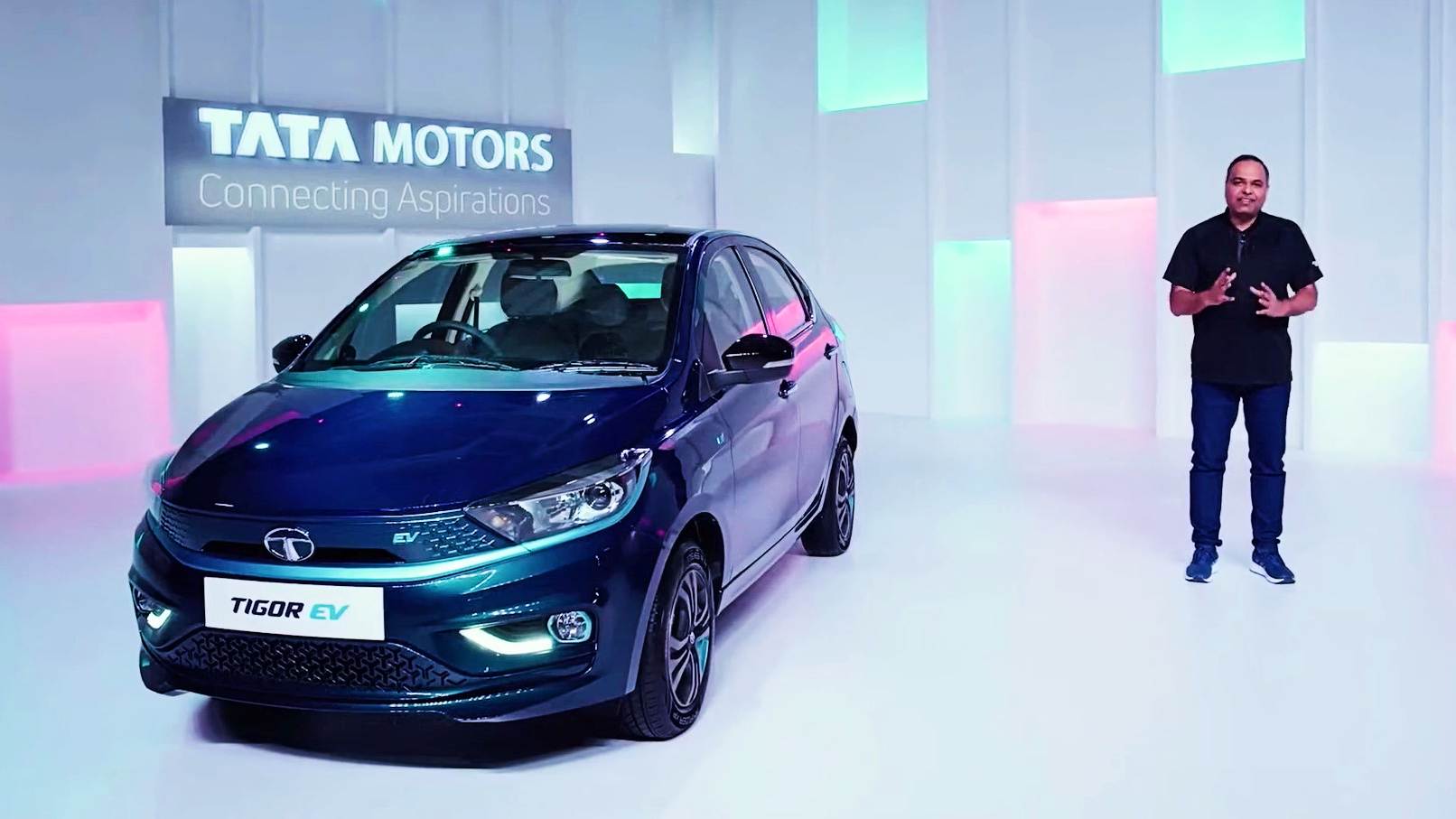
www.firstpost.com
11:20 (IST)
Tata Tigor EV Ziptron prices announced!
Here they are! Prices for the Tata Tigor EV Ziptron start at Rs 11.99 lakh and go up to Rs 12.99 lakh for the top-spec XZ+ trim (ex-showroom).
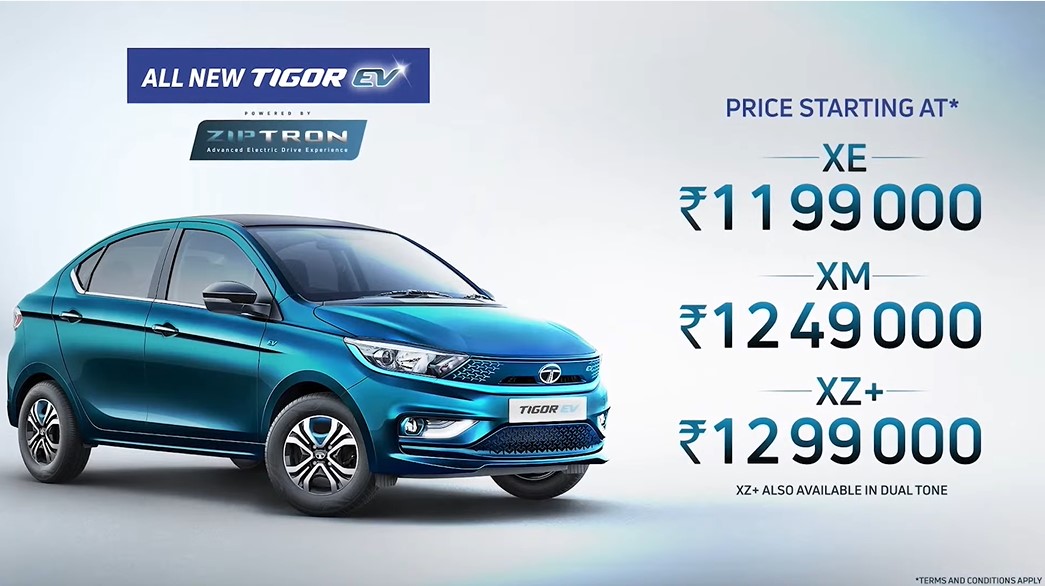
11:18 (IST)
Tata Tigor EV Ziptron charging details
The Tata Tigor EV Ziptron adopts the widely-accepted CCS2 charging standard, and supports fast-charging as well. It will take only about an hour to go from 0 to 80 percent with fast-charging, and 8.5 hours when slow charging.

11:17 (IST)
Tata Tigor EV Ziptron Global NCAP rating revealed
Tata Motors has announced the Tigor EV Ziptron has secured four stars for both adult as well as child occupant protection in the Global NCAP crash tests.

11:16 (IST)
Tata Tigor EV Ziptron range revealed
The Tata Tigor EV Ziptron has an ARAI-certified range of 306 kilometres.
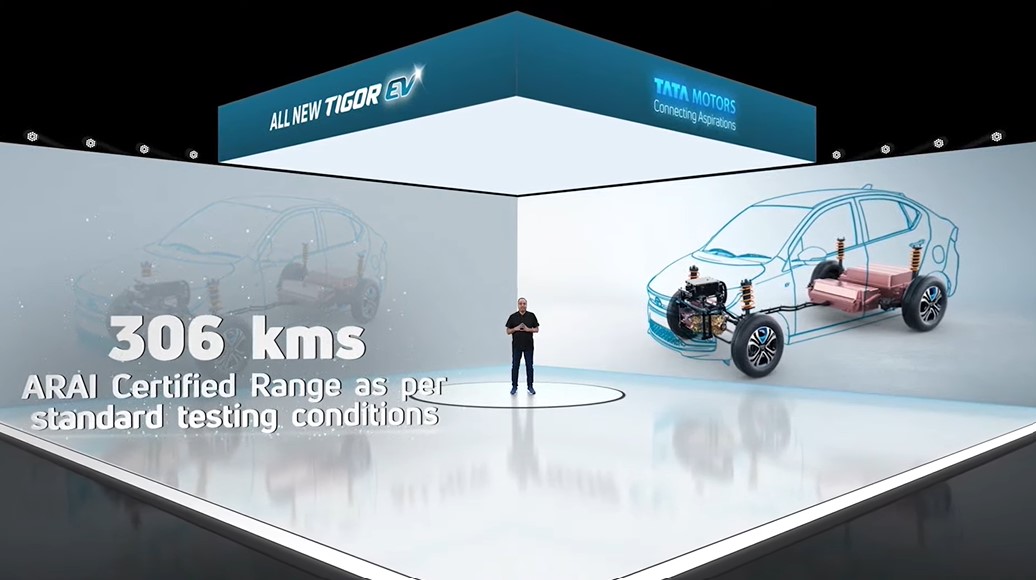
11:11 (IST)
Tata Motors ramping up charging network
From 60 charging points at the launch of the Nexon EV in January 2020, Tata Motors today has over 640 charging points all across India, situated in key cities and along national highways.
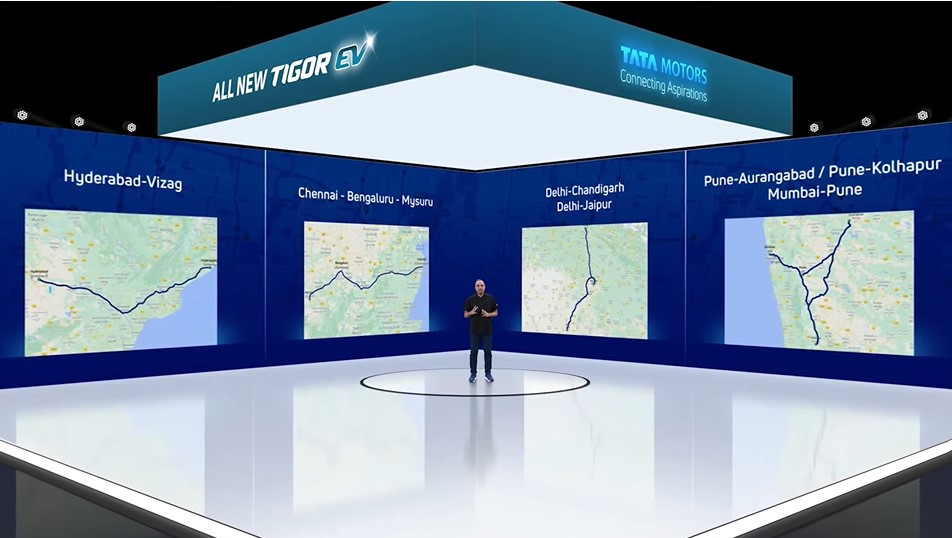
11:08 (IST)
Tata Tigor EV Ziptron battery and power output
The new Tata Tigor EV has a 26 kWh lithium-ion battery, and a motor that puts out 75 hp and 170 Nm of torque, which, while lower than those of the Nexon EV, is still a significant jump over the Xpres-T (34 hp and 65 Nm more), with a claimed 0-60 kph time of 5.7 seconds. There's an eight-year warranty on both battery and motor.
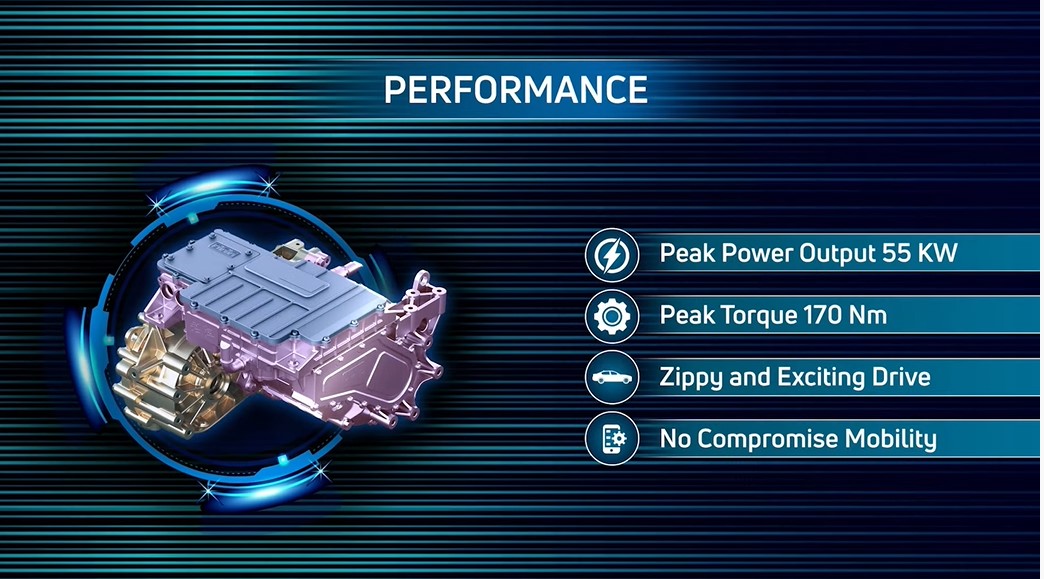
11:03 (IST)
Tata Tigor EV Ziptron launch begins
Kicking things off at the launch of the Tata Tigor EV Ziptron is Shailesh Chandra, President - PVBU at Tata Motors, who says sales of electric vehicles globally are taking off faster than was originally expected.
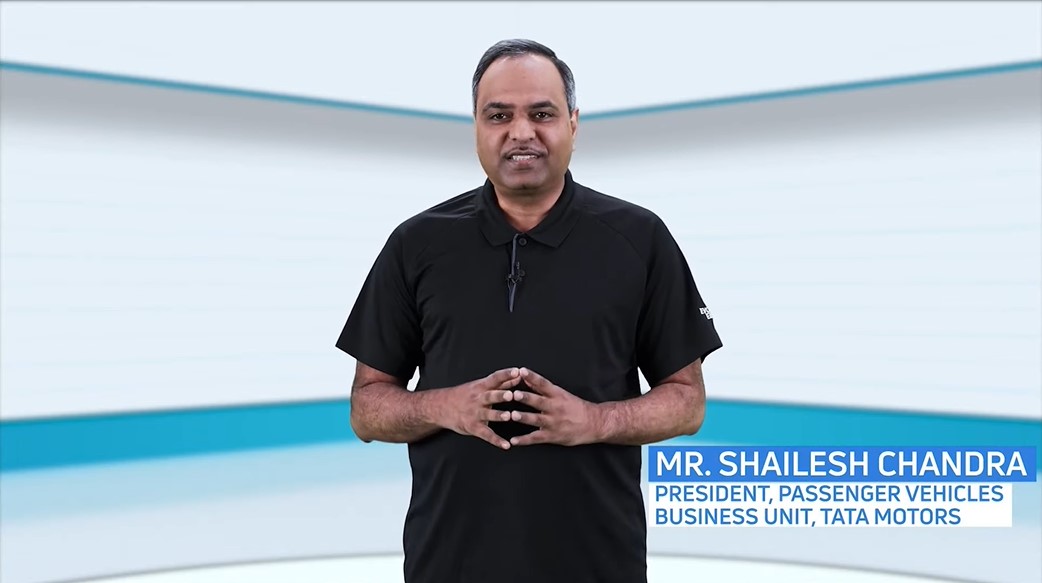
10:55 (IST)
Watch the launch of the Tata Tigor EV Ziptron
You can follow the launch of the Tata Tigor EV Ziptron right here.
10:31 (IST)
Older Tigor EV rebranded for fleet buyers
The older Tata Tigor EV continues to be on sale, but it has been given a facelift as well as a new name - Xpres-T. It's aimed solely at fleet buyers, and to distinguish it from the Tigor EV Ziptron, Tata offers it only in white with steel wheels.
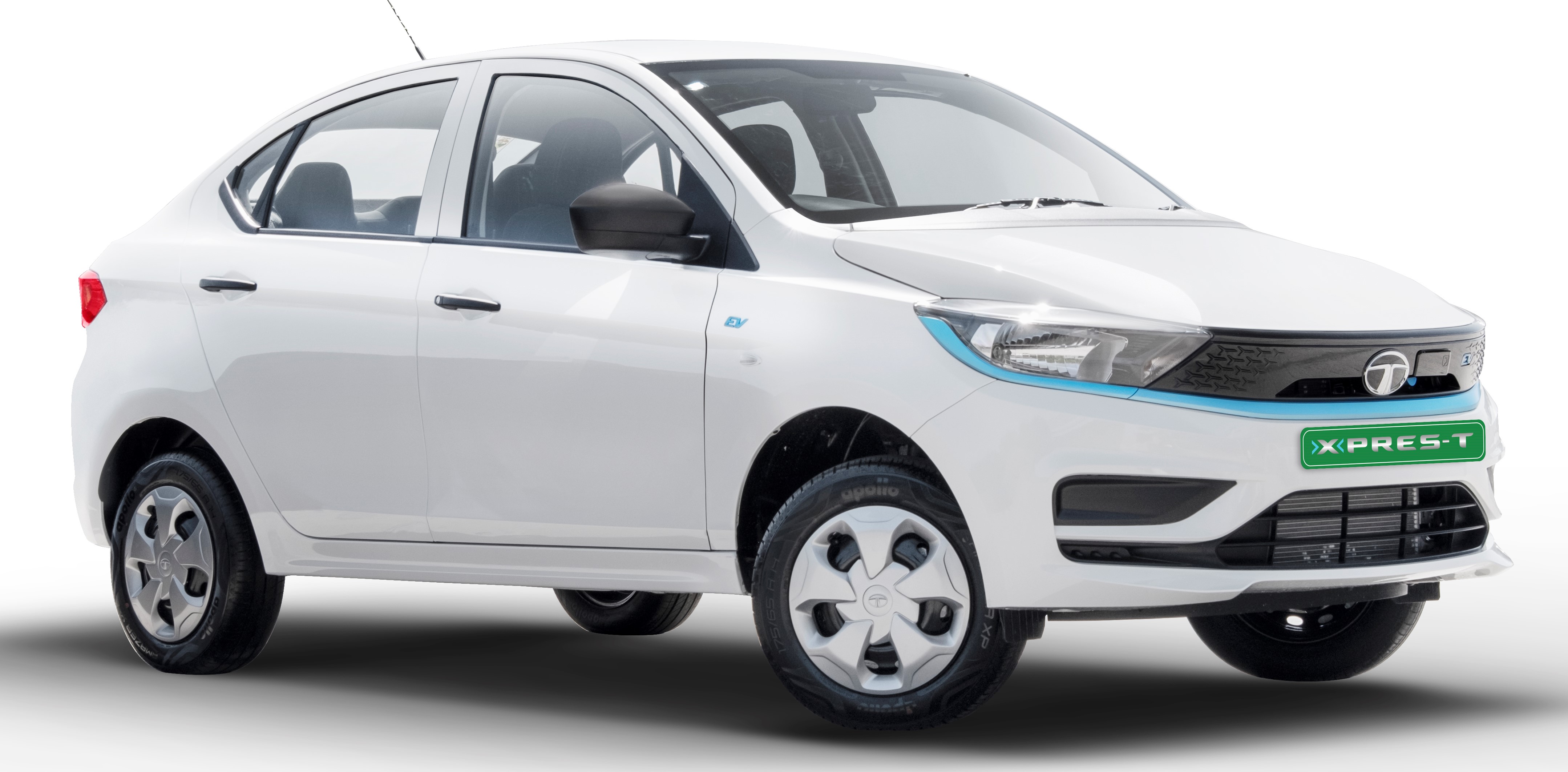
10:22 (IST)
A new lease of life for the Tigor EV
A few years ago, Tata had introduced the Tigor EV - its first production EV, pictured here - for government authorities and fleet buyers, and in 2019, it was also made available to private buyers, but found few takers because of its limited range and performance. The Tigor EV Ziptron aims to change all that.
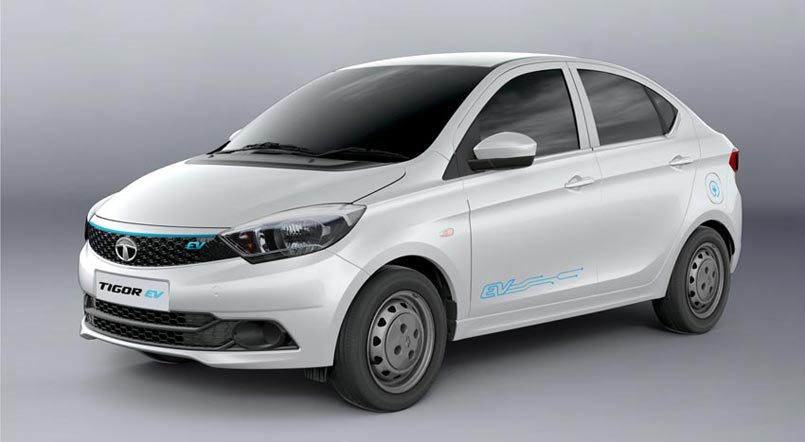
10:06 (IST)
Welcome to the Tata Tigor EV Ziptron launch!
Good morning, ladies and gentlemen, and welcome to Tech2's live coverage of the launch of Tata Motors' latest electric car - the updated Tata Tigor EV with Ziptron technology. We're less than an hour away from the start of the event, so stay tuned as we bring you all the updates LIVE from the launch.
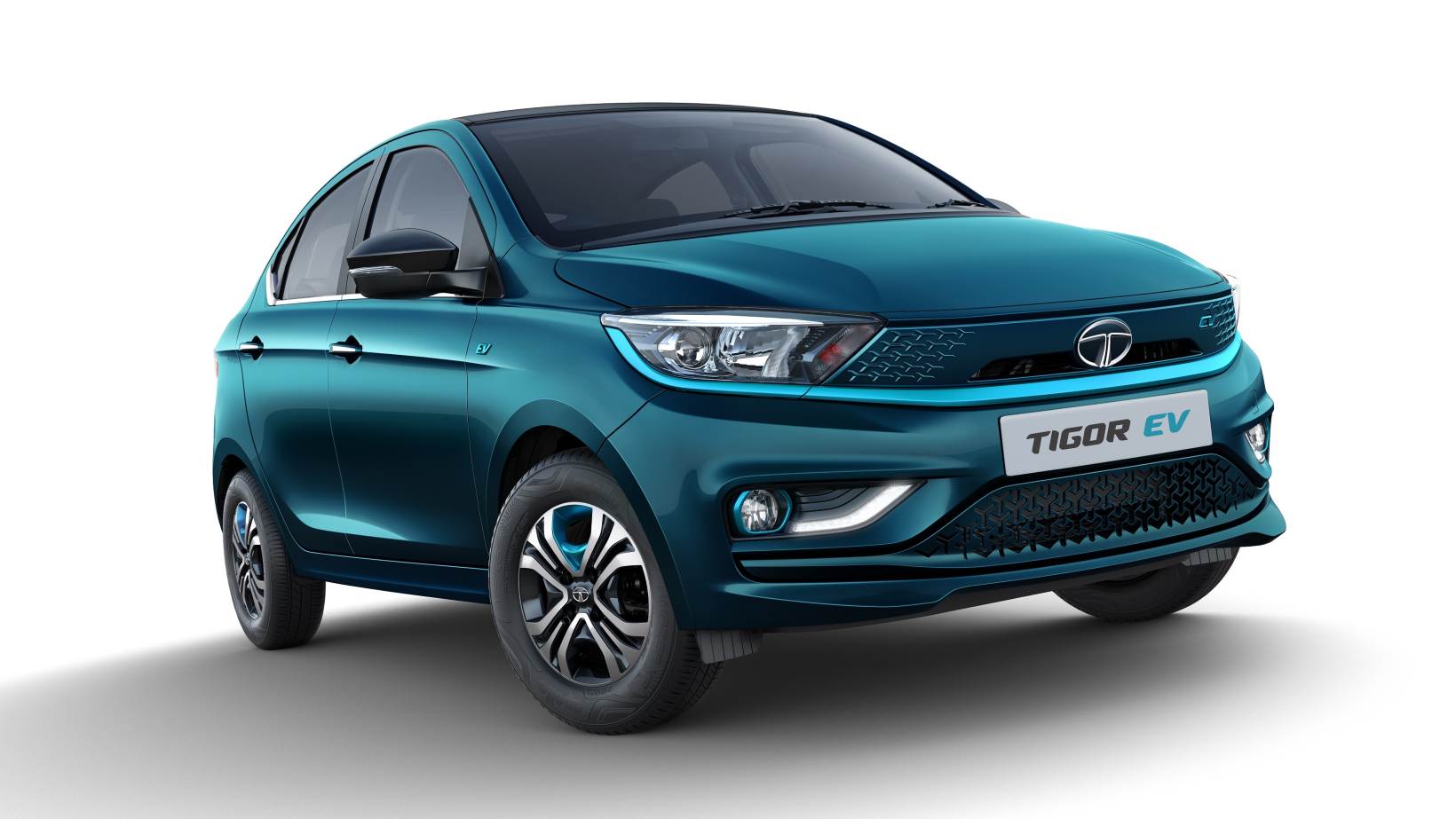
Today is the day – Tata Motors will announce prices for its latest electric vehicle for the Indian market: the updated Tata Tigor EV with Ziptron technology. Bookings for the Tigor EV Ziptron have been underway since a couple of weeks, when Tata Motors gave us a clear look at its latest EV that aims to further strengthen the company's hold over the country's electric vehicle segment, and is set to become India's most affordable EV.
Technically, the Tigor EV was never discontinued – a few weeks ago, it was rebranded the Xpres-T, and positioned as a fleet-only offering. However, despite being facelifted, the electric compact sedan carried on with its older 72-volt architecture and 21.5 kWh battery pack. Tata’s Ziptron technology – which debuted with the Tata Nexon EV – packs in capabilities far superior to those of the Xpres-T’s powertrain.
Tata’s Ziptron-powered vehicles come with a high-voltage 300+ volt permanent magnet synchronous electric motor, which is leagues ahead of the 72-volt AC induction-type motor on the Tigor EV in terms of performance. In the Nexon EV, Tata fitted a larger 30.2 kWh lithium-ion battery pack, and in the Tigor EV Ziptron, there’s a smaller, 26 kWh lithium-ion battery pack.
Tata Motors made no mention of the Tigor EV Ziptron’s range at the unveil, but while the Tigor Ziptron is unlikely to match the Nexon EV’s claimed 312 km range, it’s clear that its range will be much higher than the Xpres-T’s claim of 213 km. Tata Motors had previously revealed Ziptron vehicles will have a range of at least 250 kilometres, so the new Tigor EV’s range will certainly breach that figure. Both the battery and motor get an eight-year, 1,60,000-kilometre warranty.
The new Tata Tigor EV’s motor puts out 75 hp and 170 Nm of torque, which, while lower than those of the Nexon EV, is still a significant jump over the Xpres-T (34 hp and 65 Nm more), with a claimed 0-60 kph time of 5.7 seconds. What’s more, Ziptron technology will enable the Tigor EV to be fast-charged from 0 to 80 percent in about an hour’s time; a significant improvement over the Xpres-T, which takes about double that time.
In terms of equipment, the Tata Tigor EV Ziptron will feature automatic climate control and a portable charging cable as standard, and will also get a height-adjustable driver’s seat, power-folding ORVMs, a 7.0-inch Harman touchscreen infotainment system with four speakers and four tweeters, push-button start as well as the iRA connected car suite with over 30 connected car functions. Boot space is rated at 316 litres, which goes up to 375 litres if a buyer chooses to ditch the spare wheel.
The icing on the cake will be the CCS2 charging standard the Tigor EV is compatible with, which will grant it access to India’s rapidly-expanding EV fast-charging network. And to top it off, the Tata Tigor EV is likely to undercut the Tata Nexon EV on price, which currently is priced from Rs 13.99 lakh to Rs 16.85 lakh (ex-showroom), by a substantial margin.
11:20 (IST)
Tata Tigor EV Ziptron prices announced!
Here they are! Prices for the Tata Tigor EV Ziptron start at Rs 11.99 lakh and go up to Rs 12.99 lakh for the top-spec XZ+ trim (ex-showroom).

11:18 (IST)
Tata Tigor EV Ziptron charging details
The Tata Tigor EV Ziptron adopts the widely-accepted CCS2 charging standard, and supports fast-charging as well. It will take only about an hour to go from 0 to 80 percent with fast-charging, and 8.5 hours when slow charging.

11:17 (IST)
Tata Tigor EV Ziptron Global NCAP rating revealed
Tata Motors has announced the Tigor EV Ziptron has secured four stars for both adult as well as child occupant protection in the Global NCAP crash tests.

11:16 (IST)
Tata Tigor EV Ziptron range revealed
The Tata Tigor EV Ziptron has an ARAI-certified range of 306 kilometres.

11:11 (IST)
Tata Motors ramping up charging network
From 60 charging points at the launch of the Nexon EV in January 2020, Tata Motors today has over 640 charging points all across India, situated in key cities and along national highways.

11:08 (IST)
Tata Tigor EV Ziptron battery and power output
The new Tata Tigor EV has a 26 kWh lithium-ion battery, and a motor that puts out 75 hp and 170 Nm of torque, which, while lower than those of the Nexon EV, is still a significant jump over the Xpres-T (34 hp and 65 Nm more), with a claimed 0-60 kph time of 5.7 seconds. There's an eight-year warranty on both battery and motor.

11:03 (IST)
Tata Tigor EV Ziptron launch begins
Kicking things off at the launch of the Tata Tigor EV Ziptron is Shailesh Chandra, President - PVBU at Tata Motors, who says sales of electric vehicles globally are taking off faster than was originally expected.

10:55 (IST)
Watch the launch of the Tata Tigor EV Ziptron
You can follow the launch of the Tata Tigor EV Ziptron right here.
10:31 (IST)
Older Tigor EV rebranded for fleet buyers
The older Tata Tigor EV continues to be on sale, but it has been given a facelift as well as a new name - Xpres-T. It's aimed solely at fleet buyers, and to distinguish it from the Tigor EV Ziptron, Tata offers it only in white with steel wheels.

10:22 (IST)
A new lease of life for the Tigor EV
A few years ago, Tata had introduced the Tigor EV - its first production EV, pictured here - for government authorities and fleet buyers, and in 2019, it was also made available to private buyers, but found few takers because of its limited range and performance. The Tigor EV Ziptron aims to change all that.

10:06 (IST)
Welcome to the Tata Tigor EV Ziptron launch!
Good morning, ladies and gentlemen, and welcome to Tech2's live coverage of the launch of Tata Motors' latest electric car - the updated Tata Tigor EV with Ziptron technology. We're less than an hour away from the start of the event, so stay tuned as we bring you all the updates LIVE from the launch.

Today is the day – Tata Motors will announce prices for its latest electric vehicle for the Indian market: the updated Tata Tigor EV with Ziptron technology. Bookings for the Tigor EV Ziptron have been underway since a couple of weeks, when Tata Motors gave us a clear look at its latest EV that aims to further strengthen the company's hold over the country's electric vehicle segment, and is set to become India's most affordable EV.
Technically, the Tigor EV was never discontinued – a few weeks ago, it was rebranded the Xpres-T, and positioned as a fleet-only offering. However, despite being facelifted, the electric compact sedan carried on with its older 72-volt architecture and 21.5 kWh battery pack. Tata’s Ziptron technology – which debuted with the Tata Nexon EV – packs in capabilities far superior to those of the Xpres-T’s powertrain.
Tata’s Ziptron-powered vehicles come with a high-voltage 300+ volt permanent magnet synchronous electric motor, which is leagues ahead of the 72-volt AC induction-type motor on the Tigor EV in terms of performance. In the Nexon EV, Tata fitted a larger 30.2 kWh lithium-ion battery pack, and in the Tigor EV Ziptron, there’s a smaller, 26 kWh lithium-ion battery pack.
Tata Motors made no mention of the Tigor EV Ziptron’s range at the unveil, but while the Tigor Ziptron is unlikely to match the Nexon EV’s claimed 312 km range, it’s clear that its range will be much higher than the Xpres-T’s claim of 213 km. Tata Motors had previously revealed Ziptron vehicles will have a range of at least 250 kilometres, so the new Tigor EV’s range will certainly breach that figure. Both the battery and motor get an eight-year, 1,60,000-kilometre warranty.
The new Tata Tigor EV’s motor puts out 75 hp and 170 Nm of torque, which, while lower than those of the Nexon EV, is still a significant jump over the Xpres-T (34 hp and 65 Nm more), with a claimed 0-60 kph time of 5.7 seconds. What’s more, Ziptron technology will enable the Tigor EV to be fast-charged from 0 to 80 percent in about an hour’s time; a significant improvement over the Xpres-T, which takes about double that time.
In terms of equipment, the Tata Tigor EV Ziptron will feature automatic climate control and a portable charging cable as standard, and will also get a height-adjustable driver’s seat, power-folding ORVMs, a 7.0-inch Harman touchscreen infotainment system with four speakers and four tweeters, push-button start as well as the iRA connected car suite with over 30 connected car functions. Boot space is rated at 316 litres, which goes up to 375 litres if a buyer chooses to ditch the spare wheel.
The icing on the cake will be the CCS2 charging standard the Tigor EV is compatible with, which will grant it access to India’s rapidly-expanding EV fast-charging network. And to top it off, the Tata Tigor EV is likely to undercut the Tata Nexon EV on price, which currently is priced from Rs 13.99 lakh to Rs 16.85 lakh (ex-showroom), by a substantial margin.
In recent years, the world of cryptocurrency has undergone a seismic shift, evolving from a niche interest among tech enthusiasts to a glob...